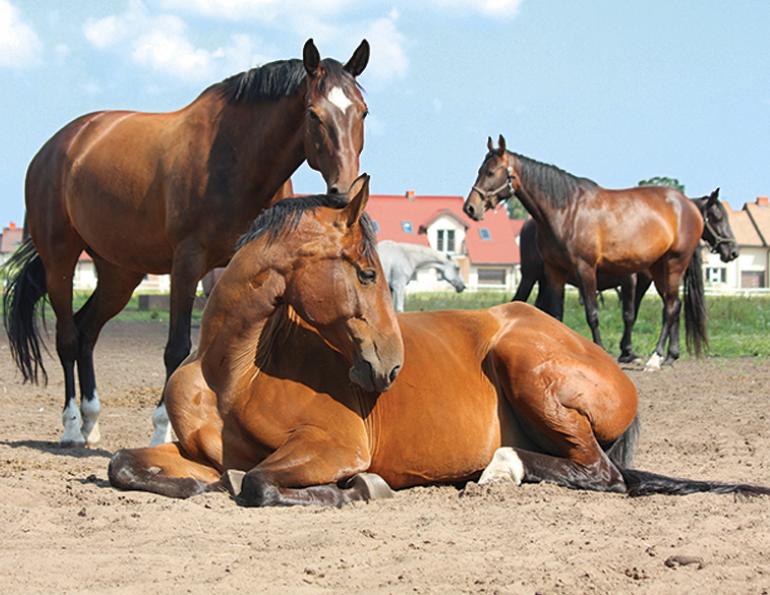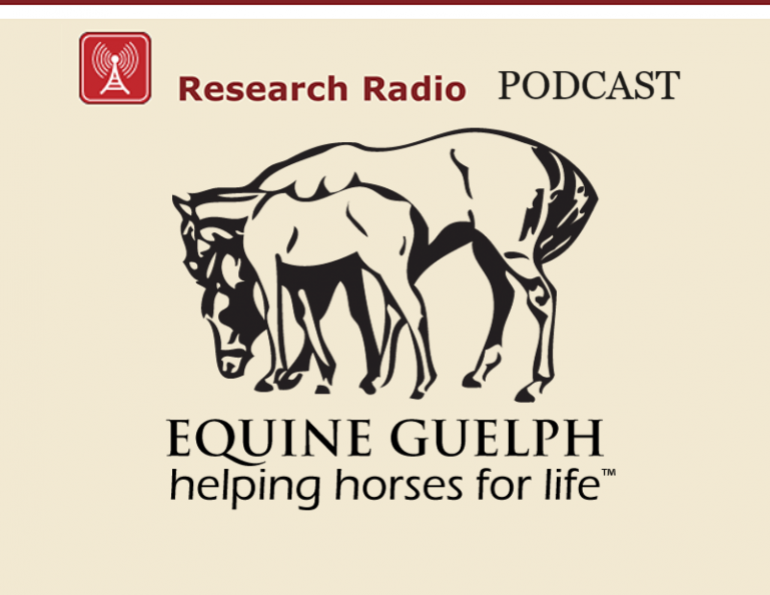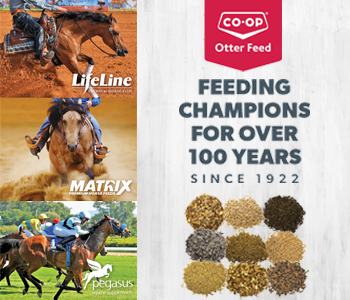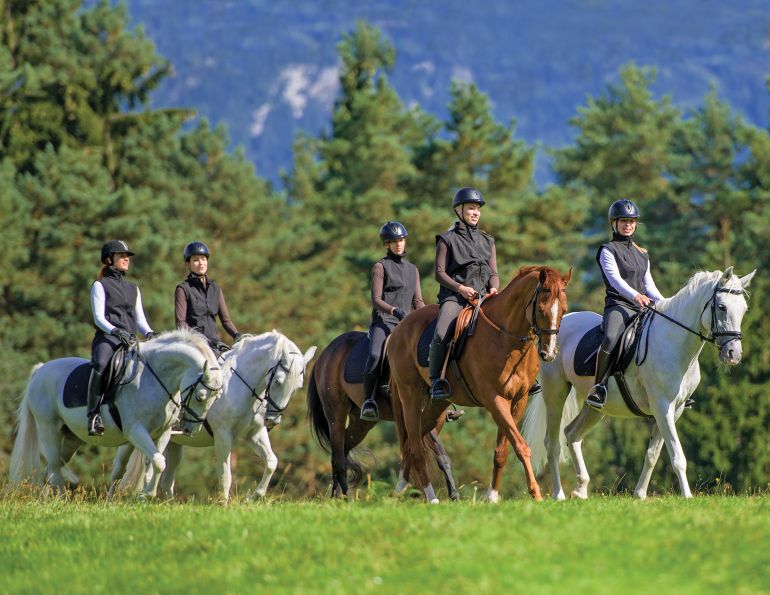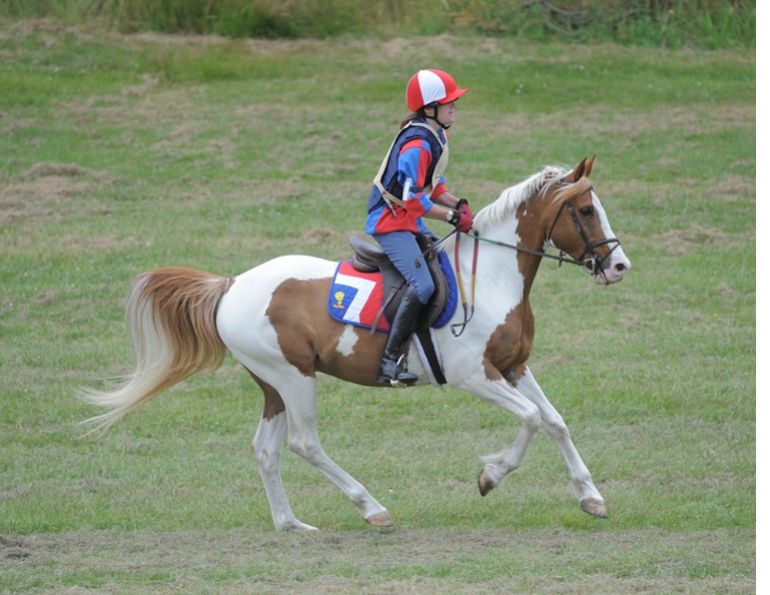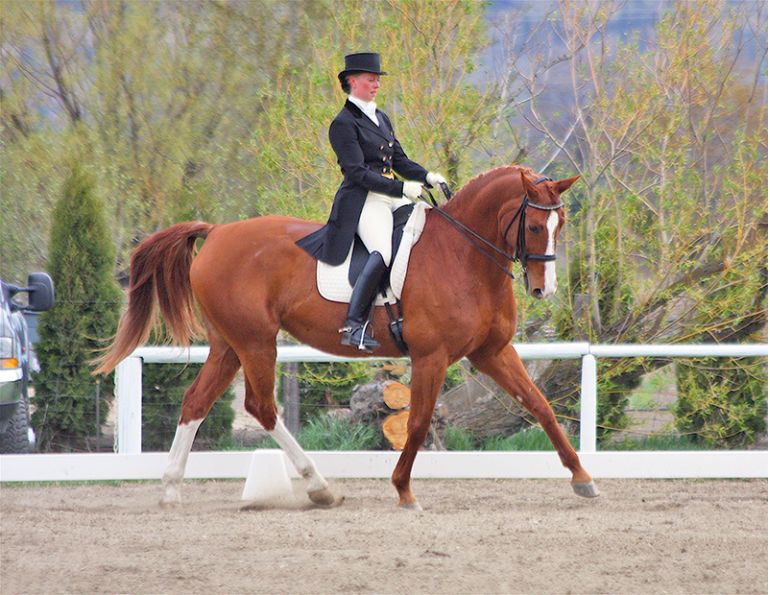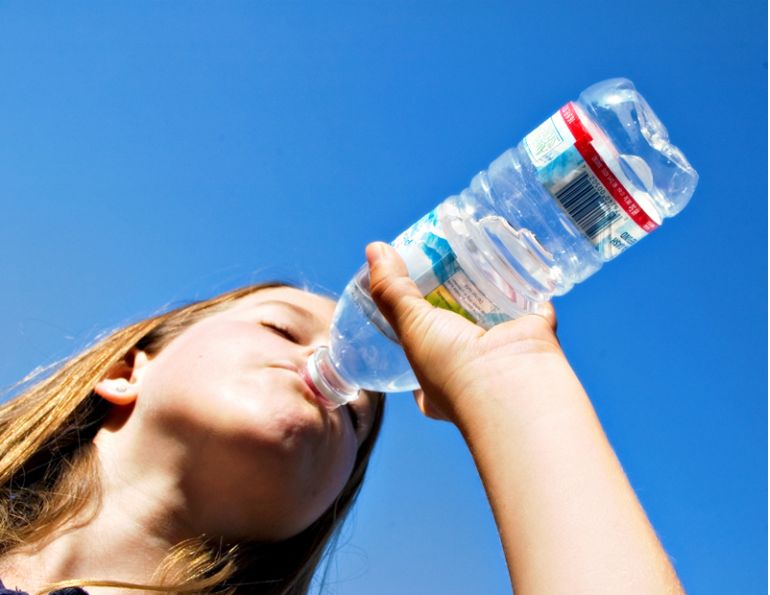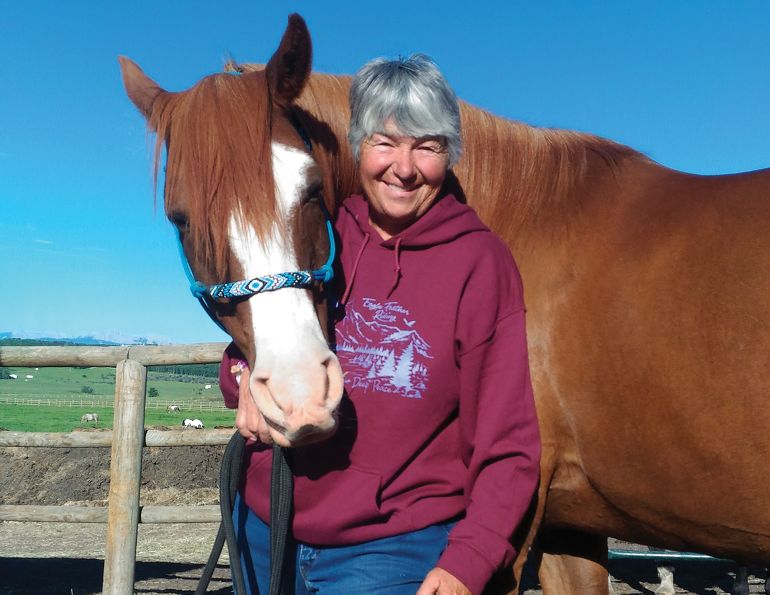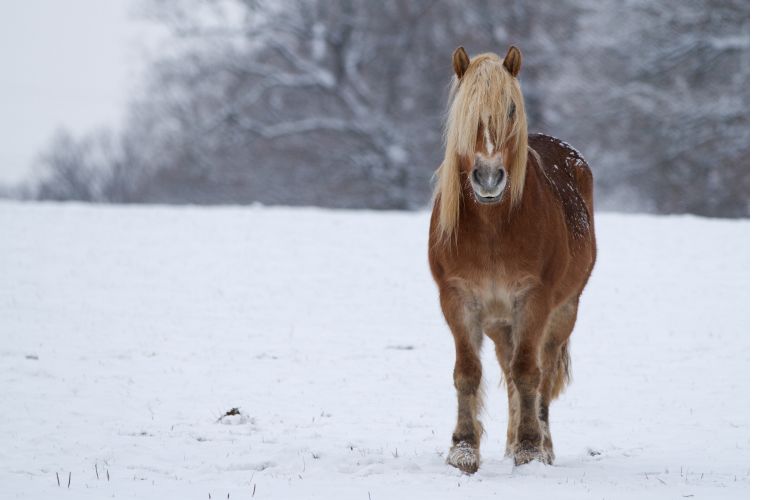What Are You Looking At?
By Sandra Verda-Zanatta
SVZ Dressage & F2R Fit To Ride Pilates for Equestrians
An equestrian athlete’s postural alignment is crucial for balance and effective communication with the horse. A rider’s dynamic posture is constantly changing with the horse’s movement. It should consist of a tall, neutral spine, shoulders down and back, a deep seat, and legs that hang against the horse’s sides with engagement and without gripping. While static, if you drop a plumb line, correct posture vertically aligns the ear, shoulder, hip, and heel, and allows the rider’s body to balance in motion (see Figure 1).

Photo courtesy of Sandra Verda-Zanatta
When training riders to develop a correct mounted position and independent seat, we tend to focus on pelvis, seat, leg, shoulder, arm, and hand position; however, critical elements often overlooked are head position and eyeline control. Typically, a human head weighs from 10 to 12 lbs; therefore, where a rider looks naturally affects their head and neck position. This affects spinal alignment, weight distribution, and is a significant factor in the development of a balanced, independent seat.
Related: Exercises for the Perfect Sitting Trot

Purposely focusing on your direction of travel and riding with your eyes forward indicates intention and direction to the horse. Photo: Dreamstime/Sergii Kumer
What is Eyeline?
Eyeline refers to where the rider is looking. Eyeline “control” is the deliberate focus and ability of the rider to use focal points. This control improves spatial awareness and accuracy, allowing riders to indicate the direction of intended travel or line of the specific movement they are preparing to execute. When a rider looks down towards the horse’s neck, it causes tension in the rider’s neck, shoulders, and upper back. This creates a collapsed torso, puts the rider out of balance, decreases use of core muscles, and causes the legs to lose position. When the eyes are down, the head tips forward, resulting in the body automatically compensating to maintain balance and causing misalignment. An eyes-down and head-forward position also increases the weight on the front half of the horse’s body, especially their front feet, making it difficult for them to transfer weight onto the hind legs and move with freedom through their shoulders (see Figure 2).

Photo courtesy of Sandra Verda-Zanatta
Related: Pilates for Every Equestrian
A forward, level eye and upright head position allow for a straight spine and relaxed neck, promoting a well-balanced, centered position in the saddle, which is essential for shock absorption and delivering consistently clear aids. By purposefully focusing ahead to their line of travel, riders stay centred during transitions, circles, turns, or jumps. The rider’s eyeline indicates intention and direction to the horse, helps maintain rhythm and tempo (speed of the rhythm), and improves accuracy while navigating dressage patterns and jump courses with smoother, more precise aids (See Figure 3).

Photo courtesy of Sandra Verda-Zanatta
As Daniel Stewart says in his book Ride Right: “When you ride with your eyes forward, you see your future. When you ride with your eyes down, you see your immediate future!”
Developing a Soft Eye
When riders learn to keep their eyes relaxed but intentional, they can observe their surroundings and become more aware of how the horse’s entire body feels, especially the hindquarters.
Related: Mounted Exercises to Improve a Horse Rider's Seat and Effectiveness
Often riders who fix their gaze down onto the horse’s head and neck ride front-to-back instead of forward — from back-to-front. This hinders the horse’s ability to move forward freely with impulsion into a consistent, elastic contact and limits the rider’s ability to feel and create true straightness and alignment of both themselves and their horse.
Vision exercises are useful to improve the rider’s focus, depth perception, and peripheral awareness, facilitating efficient, well-informed decision making, because there is more information to process. Ideally, riders want to have an expanded visual field through an aware yet relaxed eye, often called a soft eye. The practice of soft eye reduces tension both physically and mentally, allowing for better reaction times and planning. A soft eye improves a rider’s ability to stay calm and focused during unexpected challenges and distractions. Because a soft eye contributes to relaxation in the rider’s body, the aids can be fluid, controlled, and effective.
Related: Exercises for a Classical Riding Position
Helpful Tips:
- As you ride, try to widen your field of vision and see your horse within the surrounding environment. Where are the other riders in the arena? How broad is your awareness? While looking straight ahead can you also see what is around you?
- Use focal points throughout your arena and vary them. As you ride patterns, dressage tests, cavaletti, and jumps, use focal points. As you approach your focal points, lift your eyes and look above the point, then lower your eyes softly back to it. This keeps you from staring too intently and stiffening though your neck and upper body and improves awareness of your surroundings while working on eye control.

When a rider looks down at the horse’s neck, it creates tension in their neck, shoulders, and upper back. This collapses the torso, puts the rider out of balance, reduces core engagement, and disrupts leg position. Lowering the eyes tips the head forward, forcing the body to compensate and causing misalignment. It also shifts more weight onto the horse’s front end — especially the front feet — making it harder for the horse to engage the hind legs and move freely through the shoulders." Photo courtesy of Sandra Verda-Zanatta
Exercises to Develop Better Eye Control and a Soft Eye
1. Broaden your horizon! Use focal points outside of the arena such as trees, buildings, etc. Alternate between near and far objects to improve eye flexibility and adaptability.
2. Stand against a wall with knees slightly bent, rear end, shoulders, and head touching the wall (your lower back will not necessarily touch the wall); this is correct posture and alignment. Look straight ahead to the opposite wall and imagine a figure-eight and trace it in both directions with your eyes while keeping your head still. You can also do this mounted at the halt (see Figure 4).

Photo courtesy of Sandra Verda-Zanatta
3. In the same position (mounted or unmounted) turn your head left and right while moving your eyes in the opposite direction to improve balance and eye/head coordination.
4. An instructor or helper can use finger counting by walking around the arena and holding up fingers. The rider looks towards them and counts their fingers. The rider can trot over poles, do straight lines, bending lines, circles, etc. while counting those fingers.
5. In a dressage arena, ride down the centreline with your eyeline to C — can you see the letters on the long sides in your periphery without turning your head? What else can you see — walls, posts, sponsor banner, flags?
6. Ride a three-loop serpentine with poles on the centerline and cones at the centre of each half circle. Focus on the marker ahead of you; for example, when trotting over the pole you should be looking towards the cone, and when approaching the cone you should be looking towards the next pole. This exercise is good for developing rhythmic eye movement and practicing looking ahead to create smooth, fluid turns (see Figure 5).

Photo: Clix Photography
7. When riding circles, practice looking one-quarter of a circle ahead, so your line is smooth and fluid.
8. Visualize a string pulling the top of your helmet towards the sky to promote a tall, straight spine and long neck. Then imagine growing roots from your seat bones into the saddle and down through your legs.
9. Visualize balancing a cup of water on the top of your helmet, while keeping your head upright and stacked on top of your shoulders. Or take the beanbag challenge and see how long you can keep the beanbag on top of your helmet. Try it!
These tips and exercises are recommendations only and should be done with safety as the first priority.
Related: The Hows and Whys of a Winning Riding Position
Related: Improve Your Riding Posture: Build a Better Seat in the Saddle
Main Photo courtesy of Sandra Verda-Zanatta




